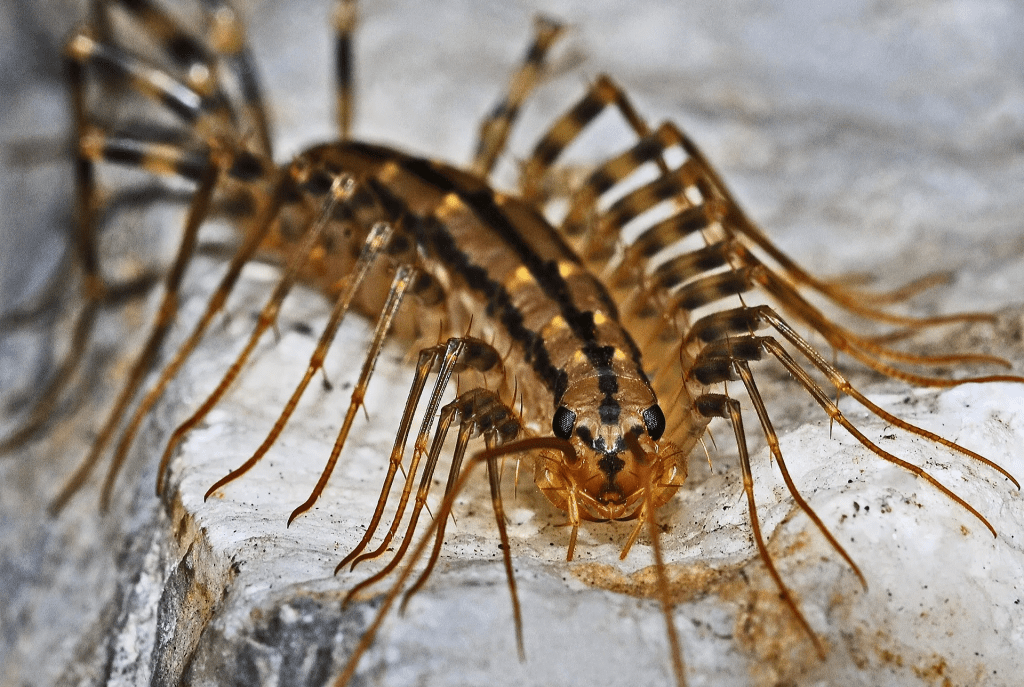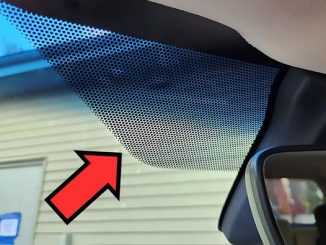Most of us react the same way when we see a bug in our house—either squish it immediately or grab something to toss it outside. But what if I told you there’s one insect you should actually leave alone if you spot it in your home?
Meet the house centipede (Scutigera coleoptrata). With its long, spindly legs and lightning-fast movements, it might look like something straight out of a horror movie, but this little creature is one of the best natural pest controllers you can have in your home.
So before you reach for a shoe, let’s take a closer look at why you might want to let the house centipede stay.
What Is a House Centipede?

The house centipede is a harmless yet incredibly effective predator that preys on many of the insects we actually don’t want inside our homes. These include:
- Spiders
- Cockroaches
- Termites
- Ants
- Bedbugs
- Silverfish
- Flies
Unlike most centipedes that prefer outdoor environments, house centipedes thrive indoors and tend to stick to damp, dark places like basements, bathrooms, and attics.
Now, I get it—these guys don’t exactly win any beauty contests. But trust me, once you understand how beneficial they are, you’ll think twice before killing one.
Why You Should Never Kill a House Centipede
1. They Are Natural Pest Exterminators
House centipedes are nature’s built-in pest control. Instead of using harmful chemicals or expensive exterminators, these little guys hunt down and eliminate unwanted pests for you.
Video : House Centipedes – What you need to know!
How do they do it? Their speed and venomous legs make them expert hunters. They don’t build webs or traps—they actively go after their prey, ensuring that other insects don’t stand a chance.
2. They Are Completely Harmless to Humans
Let’s clear up a common misconception—house centipedes are not dangerous to people.
Yes, they have venom, but it is only used to paralyze their prey. Their venom is too weak to affect humans, and they rarely bite. Even if they do, the worst you might feel is something similar to a mild bee sting.
That being said, house centipedes prefer to run away rather than confront humans. They don’t want anything to do with us; they just want to feast on the insects that invade our space.
3. They Keep Other Bugs in Check
Think of house centipedes as your personal insect bodyguards.
By keeping populations of cockroaches, termites, and other pests low, they actually help maintain balance inside your home. If you start seeing more house centipedes, it might actually be a sign that you already have a pest problem—and they’re just trying to help.
4. They Don’t Damage Your Home
Unlike termites or carpenter ants, house centipedes do not chew on wood, fabrics, or food. They have no interest in anything other than hunting insects. So unlike some other house pests, they’re not going to cause structural damage or ruin your belongings.
Where Do House Centipedes Hide?

If you’re wondering why you don’t see house centipedes often, it’s because they prefer to stay hidden in dark, humid areas. They typically hide in:
- Basements
- Bathrooms
- Under sinks
- Attics
- Closets
- Behind furniture
If you see one running across your floor, chances are it was just out hunting for food and not trying to invade your space.
How to Make Your Home More Centipede-Friendly (Without Letting Them Take Over)
Want to let house centipedes do their pest control job without feeling like you’re living in a bug-infested horror movie? Here’s how to coexist peacefully with these helpful critters:
1. Avoid Using Insect Sprays
Most commercial bug sprays will kill house centipedes along with other pests. If you’re serious about keeping them around for pest control, skip the sprays and opt for more natural solutions to deal with problem insects.
2. Reduce Moisture in Your Home
House centipedes love humid environments. If you have damp areas like basements or bathrooms, using a dehumidifier can help reduce their numbers without eliminating them completely.
Video : Just me holding a House Centipede
3. Seal Up Entry Points for Other Bugs
If you’re noticing a lot of centipedes, it could be a sign that other bugs are getting into your home too. Seal up cracks, fix leaky pipes, and eliminate other pests so your centipede population doesn’t get out of control.
4. Relocate Them If You Must
Not comfortable sharing your home with them? Instead of killing them, try catching them in a jar and relocating them outside. Just remember, without them, you might start seeing more of the insects they usually eat!
Final Thoughts: The Next Time You See One, Let It Live!
House centipedes might look creepy, but they’re actually one of the best insects you can have inside your home. They eliminate other pests, don’t bite unless provoked, and won’t damage your house.
So the next time you see one, resist the urge to squish it! Instead, think of it as your personal pest control agent, quietly working behind the scenes to keep your home bug-free.
What do you think? Would you let a house centipede stay in your home, or would you still get rid of it? Let us know in the comments!
Step into the royal mansion of Kris Jenner, 68, and husband Corey Gamble, 43, in California’s six-bedroom, eight-bathroom home where they live out the rest of their lives with love

Mady Dahlstrom works as a content editor for the home remodeling website Porch.com. Take a look at her tweets.
It’s difficult to keep up with the Kardashians, but one designer rose to the occasion by completely renovating Kris Jenner’s six-bedroom, eight-bathroom Hidden Hills, California home. Interior designer Jeff Andrews, who has built the homes of Kourtney, Khloe, and most recently, Kylie, brought Jenner’s concept of a chic yet sophisticated family base camp to life. Andrews’ work is dripping with old Hollywood elegance and richly sumptuous decor. Andrews created what Jenner refers to as “livable glamour,” which allowed her ideal house to become a reality.
Is it true that one house can fit all? The Kardashian-Jenner residence was intended to be a family gathering place, as they have six children and four (soon to be five!) grandkids. “Kris is a fantastic chef, and having a large family meant that the kitchen needed to be both aesthetically pleasing and functional for entertaining,” adds Andrews.The Kardashian-Jenner home is ideal for opulent living, from the glistening crystal chandeliers over the formal dining table to the master bathtub where everything glamorous and beautiful happens.View Photos of Kris Jenner’s House in the Hidden Hills
 .
.
This spectacular entrance is just another example of how the creator of the reality TV series Keeping Up with the Kardashians never fails to create an impression. Sophisticated Hollywood elegance is exuded by the vintage modern chandelier, multiple staircases, and a black and white checkered floor.

In her family-style kitchen, Jenner prepares classic Kardashian-Jenner family recipes from her cookbook In the Kitchen with Kris ($22; amazon.com). Dedicated to providing food for her expanding family consisting of children, grandchildren, friends, and even her ex-partners, the kitchen features numerous islands and ample countertop space ideal for large gatherings.

The perfect hostess, Jenner added her own unique touches to her dining table. Andrews explains, “Kris had several chandeliers strewn all over the house, so I grouped three of my favorites above the dining table in a subtle, glamorous way.”

According to Andrews, “livability is, to me, having rooms that are loved, used, and visually appealing, but also rooms that you want to be in.” We would love to spend time in the Kardashian-Jenner home’s living room, which has luxurious furnishings and a huge antique fireplace!

Being a “momager” has its challenges, so this working mother manages her time well with her chic workspace. “Her office needed to be both functional and a reflection of her personality because she uses it every day for meetings and as her personal space,” adds Andrews.

A high-class closet is necessary for a high-profile lifestyle. Jenner’s wardrobe boasts a mirrored center island, patterned ceiling, and specific storage shelves with a Birkin to match every blazer—it has plenty space to hold more shoes than we could ever want.

With a focus on a limited color scheme that includes black, white, gray, and a dash of neutral and metallic colors, Andrews claims that “everything works together in harmony.” The main bedroom exudes sophisticated glamor, adorned with cashmere, rich wools, and silk. “Kris enjoys opulent, incredibly tactile, and well-made items,” he continues. “Her house exudes her personality everywhere.”

Jenner has a cosmetics, clothing, and glam area in her master bathroom. The master bathroom, one of the main focus areas for the renovation, strikes a mix between style and utility.

Although even the busiest families find time to unwind, Jenner’s garden is well-known for much more. Jenner’s patio was designed to entertain, as seen by her 58th birthday celebration held there and her yearly, lavish Christmas party.



Leave a Reply